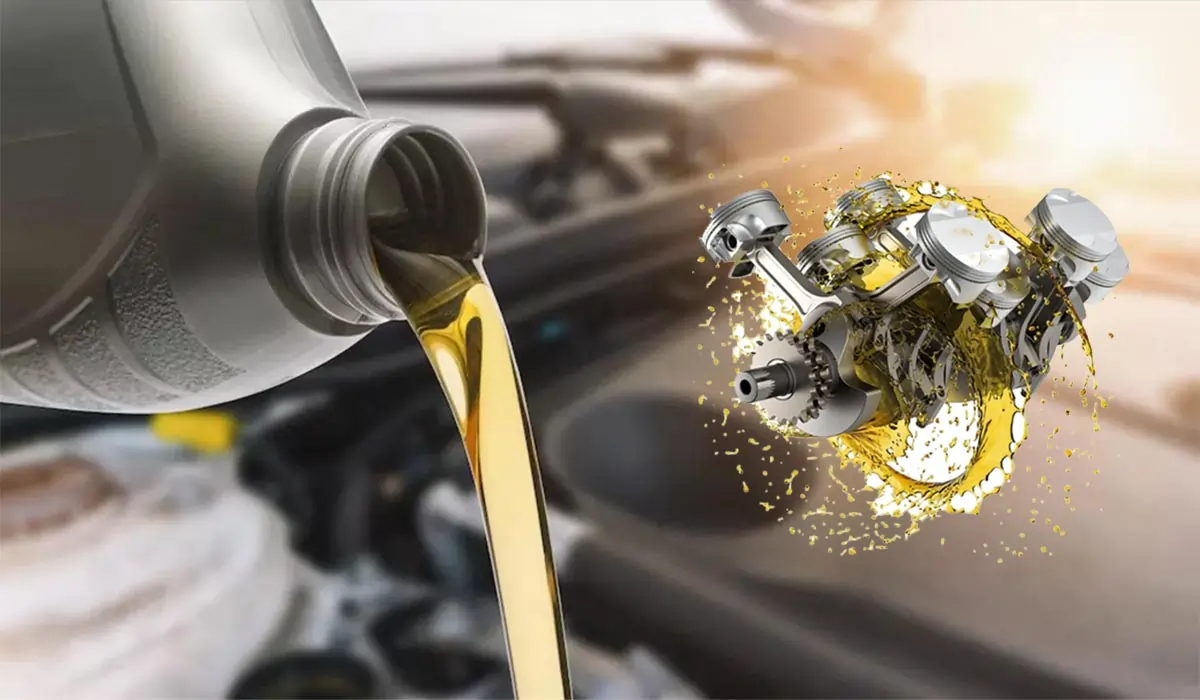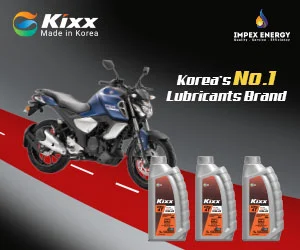Shares 2
Known and Unknown Facts About Motorcycle Engine Oil
Last updated on 09-Aug-2025 , By Badhon Roy
Engine oil is a lubricant that helps reduce the friction between the moving parts of the engine and allows them to move smoothly. Engine oil is a very important component for operating the engine. But many of us remain confused about some engine oil-related matters. For example, which type of engine oil is best to use, how often it should be drained or topped up, and which grade of engine oil is better, among other questions.
In today's article, we will try to highlight various known and unknown facts and suggestions about motorcycle engine oil.
Known and Unknown Facts About Motorcycle Engine Oil

Main Job Of Engine Oil
To understand engine oil, we must first know its main job. The effectiveness of engine oil can be divided into five parts. As mentioned-

Lubrication: Reduces friction between the internal moving metal parts of the engine and makes engine rotation smooth.
Cooling: Helps reduce the heat generated from friction due to rotation.

Cleaning: Keeps dust, carbon, metal particles, etc., clean.
Sealing: Seals the gap between the piston and cylinder to maintain engine compression.
Protection: Prevents rust and corrosion of the engine's metal parts, making the engine long-lasting.
Types of Engine Oil
Usually, engine oil comes in 3 types: mineral, semi-synthetic, and fully synthetic. Mineral oil is a petroleum-based lubricant that is naturally derived and refined, made by refining crude oil. Usually, during the break-in period of a new bike, it is better to use mineral oil.
Because the internal piston, cylinder, and valve parts of the engine need to be properly smoothed. Mineral oil is comparatively cheaper and has some limitations. Due to its low heat tolerance, the engine heats up quickly. Since mineral oil is slightly thicker so the engine comes under pressure during long rides. The drain period of mineral oil is short, so frequent changes are required.
Also Read: Engine Oil Price In Bangladesh
Semi-synthetic is a mixture of mineral oil and synthetic oil, which is made by combining the good features of both types of oil. A characteristic of these oils is that 20%–30% fully synthetic base oil is mixed with mineral oil, and in addition, necessary additives are mixed for engine protection.
Many say that before shifting directly from mineral to synthetic oil, if semi-synthetic oil is used, the engine parts can adjust well to the new oil type. The drain period of semi-synthetic is longer than mineral, and its price is slightly higher. In terms of performance, it is better than mineral. Simply it gives a balanced performance between mineral and synthetic.
Fully synthetic engine oil is a lubricant that is entirely artificially made and plays the most effective role in higher engine performance, durability, and heat control. It is considered the most advanced type of engine oil. The molecular structure of this oil is up to 99% pure and consistent. These oils are specially made for smooth and high-performance lubrication and have a very long drain period.
Also Read: Mobil Engine Oil Price In Bangladesh
Many think that fully synthetic can only be used in sports bikes or higher cc engines, which is a completely wrong idea. Fully synthetic oil can be used in any cc and segment following the specific grade. Point to be noted, the price of this type of oil is quite high, which can be considered a limitation.
After How Many Km Should Engine Oil Be Drained?
Among general bikers and mechanics in Bangladesh, there is a misconception that no matter what type of engine oil is inserted it must be changed every 800-1000 km. This is a completely wrong idea and an economically harmful decision. According to international automobile experts apart from the break-in periodthere is no great need to change engine oil frequently.
They advise that mineral oil can run for 1500–2000 km, semi-synthetic for 2500–3500 km, and fully synthetic oil for 4500 to 6000 or more. If the engine oil level is checked at regular intervals and it seems low, it can be topped up accordingly without causing any harm to the engine. But care must be taken not to always use it by topping up unless the density or viscosity of the engine oil remains intact. If that happens, the oil should be replaced.
How To Know It's Time To Change The Engine Oil?
For many of us, it’s not always possible to keep track of kilometers and change engine oil accordingly. Some may not believe it, but your bike itself will tell you when it’s time to change the engine oil. When the oil becomes thinner or friction increases in the engine, it results in abnormal sounds.
In such cases, the engine oil should be checked and topped up or drained as needed. If the oil color becomes dark or burnt, it must be changed. One major signal for an oil change is overheating. Simultaneous issues like knocking, difficulty in gear shifting, throttle response decrease, and black or bluish smoke with a burnt smell are clear indicators that the engine oil should be changed.
Special Precautions
It is best to use the grade of engine oil (like 10w40, 20w50) recommended in the user manual of the bike brand. The digits before “w” refer to the fluidity in cold conditions, and the digits after refer to the fluidity in hot conditions. Although grade has some relation with weather, it’s still best not to change the grade.
Another important precaution is that nowadays, along with low-quality engine oil, exact counterfeit versions of reputed brand oils are available in the market. Using fake engine oil harms the engine and nearly every part of it, which not only ruins the engine over time but can also lead to the engine seizing while running, causing serious accidents. So, one must be cautious and collect authentic and original oil from a trusted shop.
T
Published by Badhon Roy














